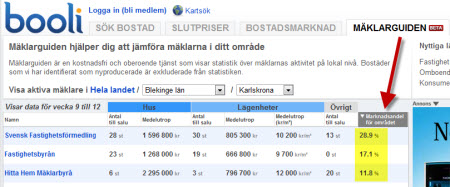The RICS has published a great paper on Social Media in Commercial Property. It's written by my friends Andrew Waller (top) and Bob Thompson at REMIT Consulting. (RICS is 'Royal Institution of Chartered Surveyors')

Benefits of reading
The primary reason to read this paper is not to start using Social Media, but to better understand it. A big step since the word 'Social Media" has been described as “I have rarely come across a word that has more negative connotations to managers in enterprise organizations”, read more.
Whats great with this report is that it doesn't advise everyone to start a fan page at Facebook or start using Twitter. On the other hand, it shows examples of where social media is (and can be) used in the industry.
Andrew and Bob writes "This report seeks to steer a middle path between these two extremes, recognising the intense individuality of social media while keeping an open mind about the opportunities it presents for the company, pointing out the threats that it may pose and suggesting strategies for dealing with both".
The outline of the report
The report of 26 pages consist of chapters like:
- What is social media?
- Real estate opportunities
- Why must real estate engage with social media
- Where next? - First steps
The authors go through the different aspect for agency, professional services, development, property management and marketing.
Social media at work
There are many aspects of social media and one is how to handle the use of social media within an organisation. A not uncommon solution is to make it impossible to use sites like Facebook or Twitter.
My opinion in this is ok if you also remove coffee breaks, lunches with your colleagues, make it forbidden to use the phone and email for private use! Those are also ways of communicating. (Not saying that it is ok to spent 2 hours a day on Facebook, but you don't ban all mobile phones just because someone is calling way to many private calls...)
Or as the Andrew and Bob puts it "In much of the world of property, status is measured by the ability to attract work and successful projects from a network of contacts. We, as an industry, encourage graduates to “get out into the market” to make contacts because we know that improving their personal brand will enhance the chances of them earning revenue for the firm. We then set up our computer systems to stop them accessing Facebook, mySpace and Twitter – the methods they have been using at college to network."
My thoughts
The use and possibilities of social media is interesting. But it's a challenging area to move into, especially if you're in the area of B2B.
I believe companies should focus on:
- Understand what is Social Media (read this report)
- Reflect over the internal use among employees and set guidelines (not ban!). Thing about LinkedIN, CREOpoint, Facebook and so on.
- Could we use the techniques in social media internal? To improve the Intranet, make it easier to connect within the firm, an internal wiki...
- Could it improve the way we communicate with the outside world? Could a blog be used to position us as thought leader?
Please, do not start a blog or fan page on Facebook just because your PR/advertising/web firm thinks that is a great idea... That will never work!












